What could it mean to be An Activist in a Post Anthropocene Planet?
Abstract
Set at Reggio School, Madrid, on Earth Day, this play critically evaluates the differing approaches to environmental activism in an Anthropocene planet. The narrative begins with a guest lecture by Margherita, a visiting environmental thinker, who introduces the concept of a-human activism. She urges students to move beyond human-centered views and embrace a holistic approach to caring for all life forms. As the discussion unfolds, perspectives from the teacher Milagro, an ex-Greenpeace activist, and the school garden caretaker reveal a tension between radical activism and more pragmatic, community-based approaches.
The students’ journey takes a dramatic turn when they encounter a large Earth Day protest on their way home. Here, they witness the clash of ideologies in real-time: Greta Thunberg, their outspoken classmate, leads a passionate call for urgent action, while a politician attempts to placate the crowd with empty promises. Margherita reappears amidst the chaos, urging a quieter, care-centered approach. As tensions flare, a heated debate erupts, exposing how activists with shared goals often undermine one another due to divergent strategies. The play concludes with a powerful reflection on the role of activism, and its value on an Anthropocene planet.
Characters


Act I
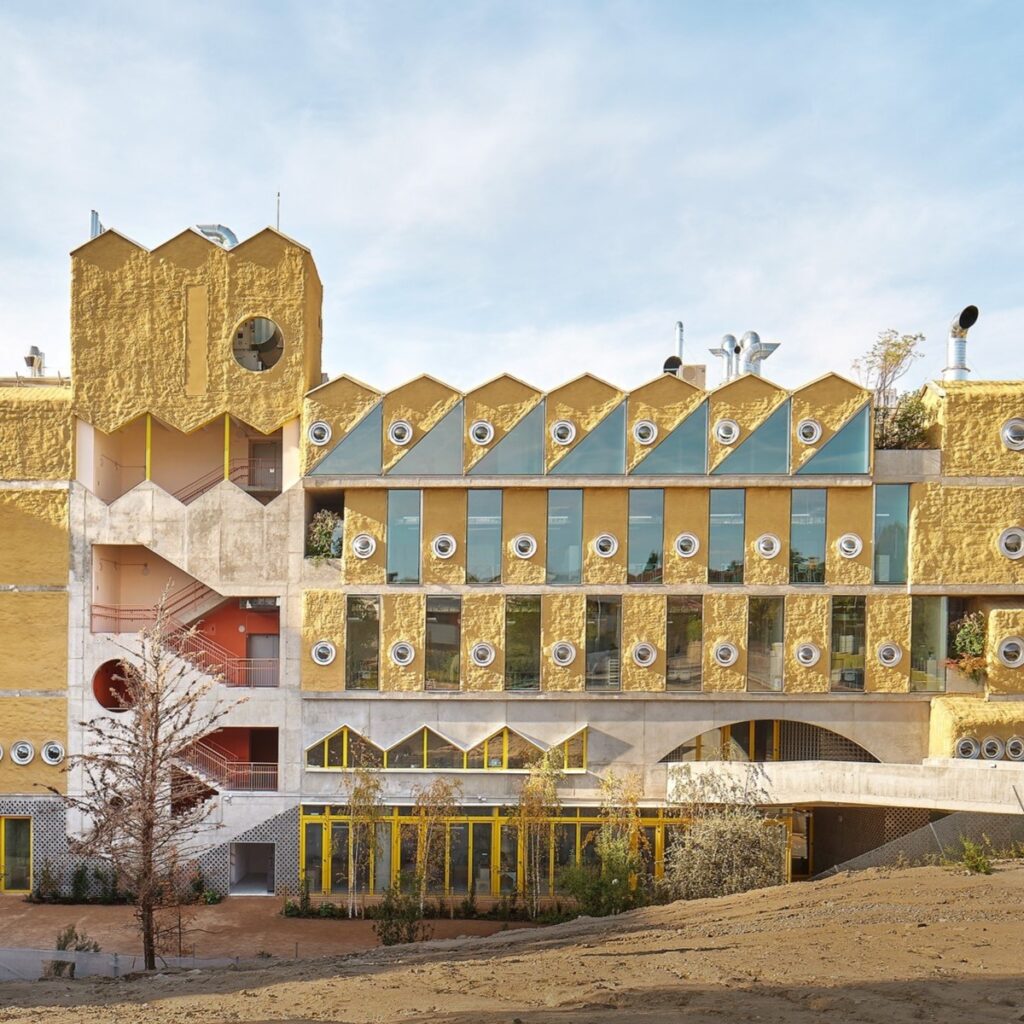
* It’s a bright day at the Reggio School where many activities are planned for the celebration of Earth Day. Environmentalists and activists have been invited to the school to raise awareness about environmental activism. For Class 12B, Margherita will be giving a speech about a-human activism. Milagro, the teacher, gathers the students for the beginning of the talk. *
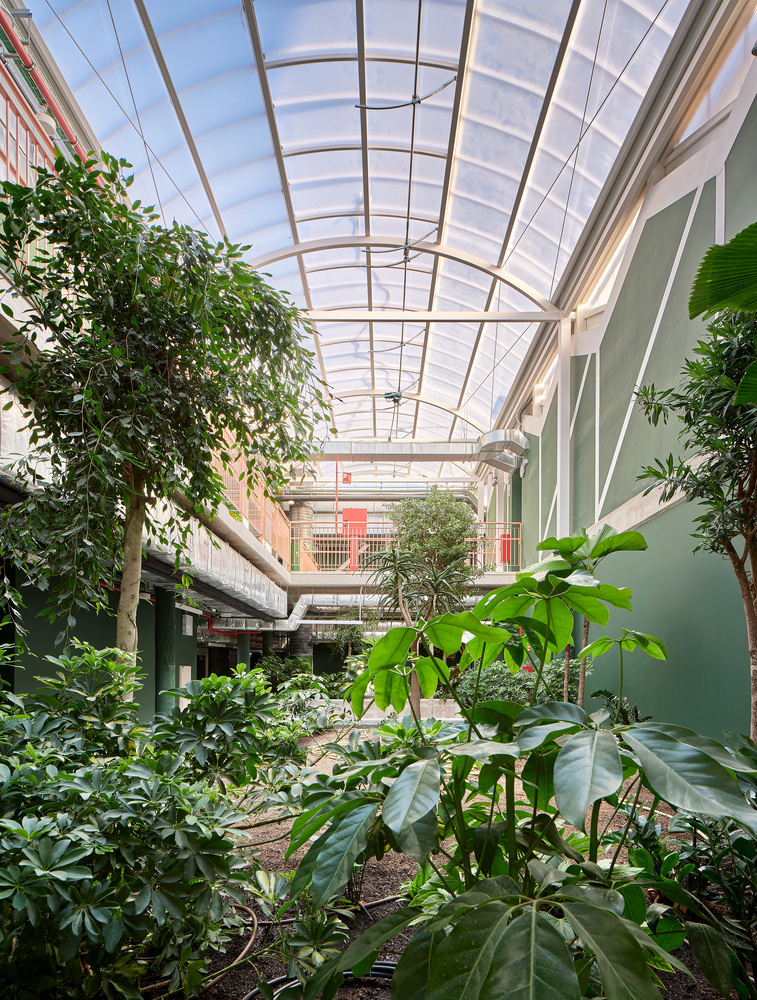
Milagro: Good Afternoon, students. Today, we have an inspiring guest with us. Please welcome the activist, leading environmental thinker, and philosopher Margherita!
Margherita: Good Afternoon students! Firstly, Happy Earth Day!
Students: Happy Earth day!
Margherita: On this day, I want to remind you that we humans are simply part of a thing known as earth.1 And with that in mind, I have come to introduce you to a-human activism. It’s about moving beyond just human-centered thinking, because we must realize that the world does not need us; we need the world2.Ahuman activism is about understanding and caring for all living things, the plants, the animals, even the tiniest creatures that share this world with us. We must learn how we can become advocates not just for ourselves and our needs, but for the Earth and all who call it home.
Student 1: What is Activism?
Margherita: Activism is strangely specific, unique, tactical and polyvocal, Activism has long affirmed that forsaking power within the system which constitutes it is the way to change it, and forsaking our human privilege is a way to forsake the Anthropocene in order to affirm the world.3
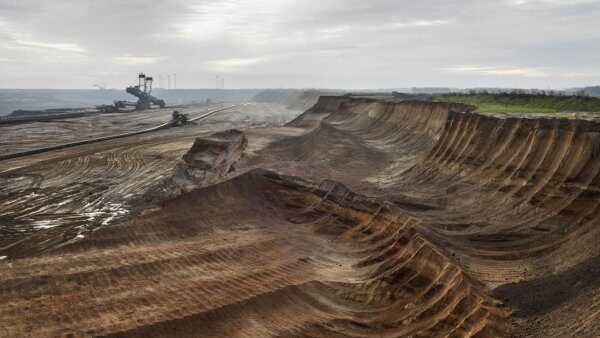
* Students in silence, as they didn’t understand. *
Student 2: What does that mean exactly?
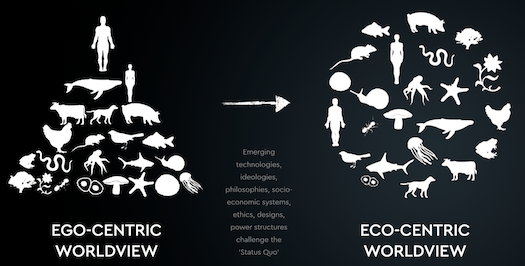
Milagro: So kids, what Margherita is trying to say is that activism is powerful because it’s creative, strategic, and involves many different voices. Activists believe that true change comes from giving up power within the systems that created the problems in the first place. In the same way, if we let go of our human-centered ways of thinking, we can move beyond the Anthropocene and truly support the Earth as a whole.
Margherita: Correct! Most importantly, you must understand that our mission on this planet is to be ‘a-human’—to see ourselves as just one part of the larger web of life. All living organisms share this experience called life, but humanity’s self-centered approach has disrupted nature’s balance.
Student 3: How can we, humans, be a-human?
Margherita: There are many aspects to a-humanity. One of those are- Awareness of the inability of anthropocentrism to open to the other is an implicit part of becoming ahuman.4 Human-centered thinking limits our ability to connect with others.
Milagro: Interesting perspective, Margherita. However, we must go beyond just connecting with others, to avoid becoming passive. We must participate in non-violent direct action to address environmental problems, taking action aiming to “promote solutions that can stop climate change, protect biodiversity, and prevent pollution.”5
Margherita: That’s true, but more importantly, we must strive to understand root issues. Humans do not create symbiosis. Humans do not reciprocate. Humans use; whether in theory or practice, it all comes down to both being indivisible, because use of any kind directly impacts through its affective expression of an other, on that other’s potential to express itself in its own way.6
Student 4: Is it possible to balance human needs with those of the environment?
Milagro: Ofcourse! By making sustainable choices. For instance, “adopting energy efficiency measures” and “promoting renewable energy”7. It’s about changing our lifestyle and caring to reduce our impact.
Margherita: I agree, but it’s also about changing our mindset. Human privilege is yet to be seriously addressed beyond being considered a ‘problem.8 We must shift our focus from human-centered activism to a broader care that includes all life forms.
* The Caretaker of the School comes to the garden and notices the arguments of both Margherita and Milagro. He intends to join the conversation. *
Caretaker: Excuse me!.. Sorry to interrupt. I would like to share my perspective.
Both Margherita and Milagro: Yes, Please go ahead!
Caretaker: Both of you make valid points. Care, caring, carer. Burdened words, contested words. And yet so common in everyday life, as if care was evident, beyond particular expertise or knowledge… Care is omnipresent, even through the effects of its absence.9 Care is a force distributed across a multiplicity of agencies and materials and supports our worlds as a thick mesh of relational obligation.10It’s about interweaving our lives with the environment sustainably and respectfully.
* The Caretaker notices the student’s confused faces. *

Our school is the perfect example of holistic care. The building aims to go beyond sustainability by integrating environmental impact, ecological relationships, resource use, community governance, and education into its architecture. The school functions as a vertically integrated ecosystem. It operates as an assemblage of different climates, ecosystems, architectural traditions, and regulations. Classrooms are organized around this inner garden, like in a small village. This distribution implies a growing capacity for students to explore the school ecosystem on their own and with their peers.11
Margherita: But we must also question the systems in place. The arenas of contestation have remained within anthropocentric discourse, which is the most sinister element of the Anthropocene’s limitations on activism.12
Students: Whatt????
Caretaker: Indeed, it’s about fostering a community that values all forms of life. Building a caring world thus returns us to where the Care Manifesto began: from acting upon the understanding that as living creatures we exist alongside and in connection with all other human and non-human beings.13
Student 5: With so many different approaches to activism, can we really make a difference?
Milagro: Yes, we can. Every small action counts. “Promoting solutions,” “demanding justice,” and “taking action on our consumption” are steps we can all take.14
Margherita: True. And by moving beyond just human concerns, we can create a more inclusive and sustainable world. It is time to de-manifest anthropocentrism. It is time for humans to stop being human. All of them.15
Caretaker: Let’s not forget, “Care is a human trouble, but this does not make care a human-only matter”16 . We must integrate care for all life forms into our activism.
Milagro: Thank you, Margherita and our caretaker, for these insightful perspectives. Let’s all commit to making a difference, starting today.
* The students applaud, and the scene ends with a sense of renewed purpose and understanding. The students feel exhausted and confused, overwhelmed by the many complex approaches to activism they’ve encountered. *
Act II

* The school day ends, and the students board the bus, ready to head home. As they drive through the city, they’re suddenly stopped in front of the parliament building, where a large Earth Day protest has blocked the road. The students watch, some intrigued, some disturbed, as protesters raise their banners and chant.*
Students: LOOK AT THAT! WOW! WHAT’S GOING ON?
* Demonstrators’ chants fill the air.*

Bus Driver: The road is temporarily blocked for an Earth Day protest. Looks like we’re going to be a bit delayed getting the students home.
Students: (At the same time)
I am so hungry!
I want to go home now!
Noooo
* Greta Thunberg, a classmate who had missed school to attend the demonstration, spots the bus and her friends. Determined, she heads over to convince them to join the protest.*
Greta: How could you be so complacent about your future? I want you to act like the house is on fire. Because it is.17
Student 1: But we didn’t set the house on fire. It’s not our fault. We shouldn’t have to deal with the consequences. Did you miss school to attend the demonstration?
Greta: We live in a strange world where children must sacrifice their own education in order to protest against the destruction of their future. Where the people who have contributed the least to this crisis are the ones who are going to be affected the most.18
Student 2: So what do you expect us to do?

Greta: You must unite behind science. You must take action. You must do the impossible. Because giving up can never ever be an option.19 Humanity is now standing at a crossroads. We must now decide which path we want to take. How do we want the future living conditions for all living species to be like?20
Student 3: But Greta, we have to study for our tests tomorrow! We don’t have time to be activists today!
Greta: And why should we be studying for a future that soon may be no more, when no one is doing anything to save it?21
Student 4: Will we even be allowed to go?
Greta: So, we can’t save the world by playing by the rules, because the rules have to be changed. Everything needs to change and it has to start today.22
* The students overpowered the bus driver’s attempts to keep them inside. Determined, they stepped off the bus and headed straight for the demonstration. *
Act III
* Led by Greta, the students arrive at the protest and spot Margarita observing the demonstration. They move towards her. Signs reading ‘No Planet B,’ ‘Climate Justice Now,’ and ‘The Earth Needs Us’ wave high above heads, rippling like a sea of resistance. A hush falls over the crowd as a politician emerges from the parliament building.*
Politician: Good afternoon, everyone. I want to thank each of you for your dedication. We understand that the climate is a pressing issue, but I assure you, we are committed to making sustainable changes to ensure our continued prosperity..Our policies are already working toward cleaner energy, reducing emissions, and addressing pollution. We’re doing all we can for the sake of humanity and we’re making good progress.
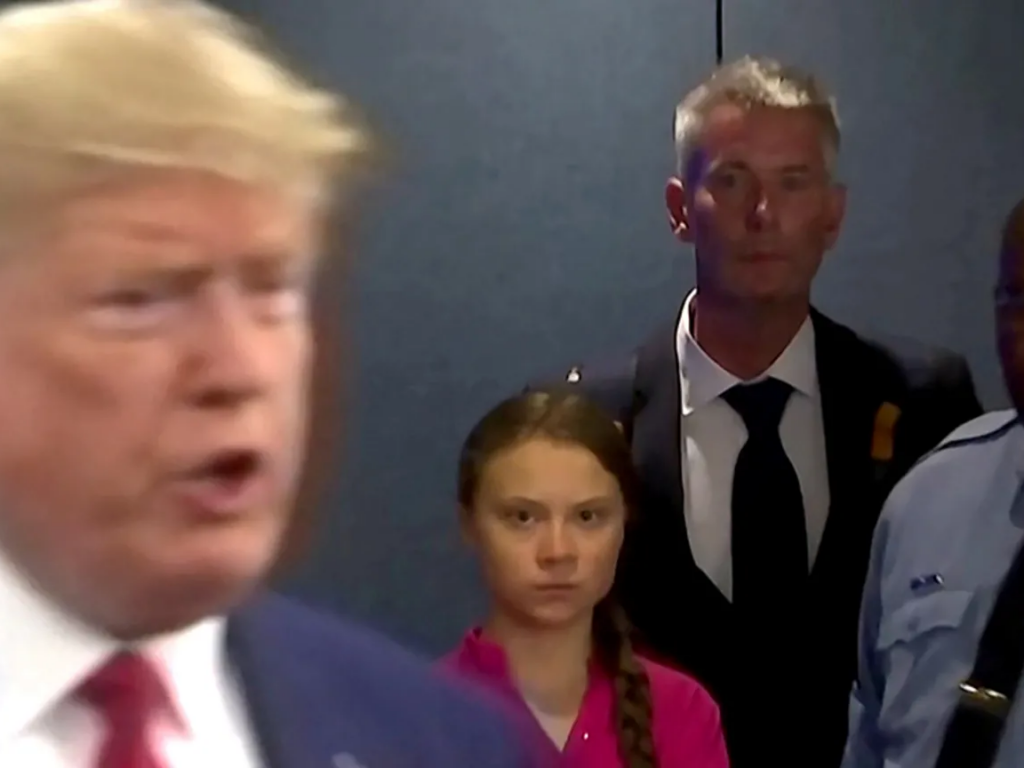
* Greta quickly picks up the megaphone and responds to the politician.*
Greta: You are failing us. But the young people are starting to understand your betrayal.23Our leaders say we need to stop deforestation, restore nature and plant trees to save the climate and biodiversity. Yet, basically everywhere they’re doing the exact opposite.24
Margherita: I am not convinced of the imperative of self-preservation to come before the equality of others.25However, the silence, the letting be, can open us to non-speciesist occupation belonging to rather than owning of the world.26
* The politician shifts uncomfortably, taken aback by the intensity of the young voices challenging him. He tries to regain control of the crowd.*
Politician: Let’s be practical. Your demands for the Global North to really take accountability would cause economic instability, job losses, disruption. I think climate change is just a really, really expensive form of tax.27
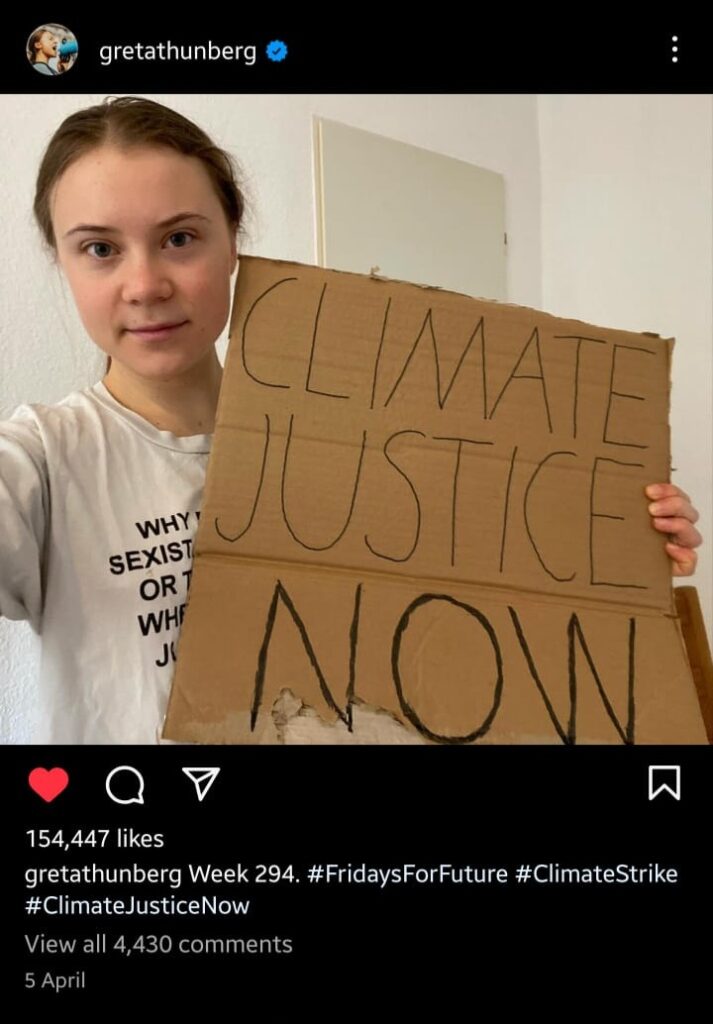
Greta: People are suffering. People are dying. Entire ecosystems are collapsing. We are at the beginning of a mass extinction and all you can talk about is money and fairytales of eternal economic growth. How dare you!28
* The crowd erupts in cheers and applause, emboldened by the activists’. The politician is visibly flustered but tries to continue.*
Politician: Economically and demographically and culturally, the damage is done.29 Whatever we do on this Earth will not change the weather30.There is no reason to engage in such disruptive demonstrations.
Margherita: Activism now is local with far-reaching effects, viral rather than ubiquitously recognizable, actively creative rather than reactive because logics of dialectics are no longer seen as effective or relevant.31 Activism can be a double edged sword. The more you know the other, the more you dominate their being.
Greta: You say we should not engage in activism. Instead we should leave everything to our politicians and just vote for change instead. But what do we do when there is no political will? What do we do when the politics needed are nowhere in sight?
Margherita: In reality, Activism is currently the most urgently needed action in the world for two reasons,which are also its two problematic qualities.The first is that the accelerated globalized forces of the anthropocentric world are preceded by the destruction they are not even aware they bring seemingly until it is too late. Second, structurally activism repudiates structure itself. Because the world is increasingly both temporally fast and spatially simultaneous, large-scale political or even revolutionary movements are dubious in the ways they reflect the very structures they seek to dismantle, and impossible due to their development and implementation becoming defunct before it has been activated.32
* The crowd erupts in cheers and applause, emboldened by the activists’. The politician is visibly flustered.*
Margherita: If hope is the action of activism without a rulebook, then faith is the commitment to action being better than apathy or atrophy.33
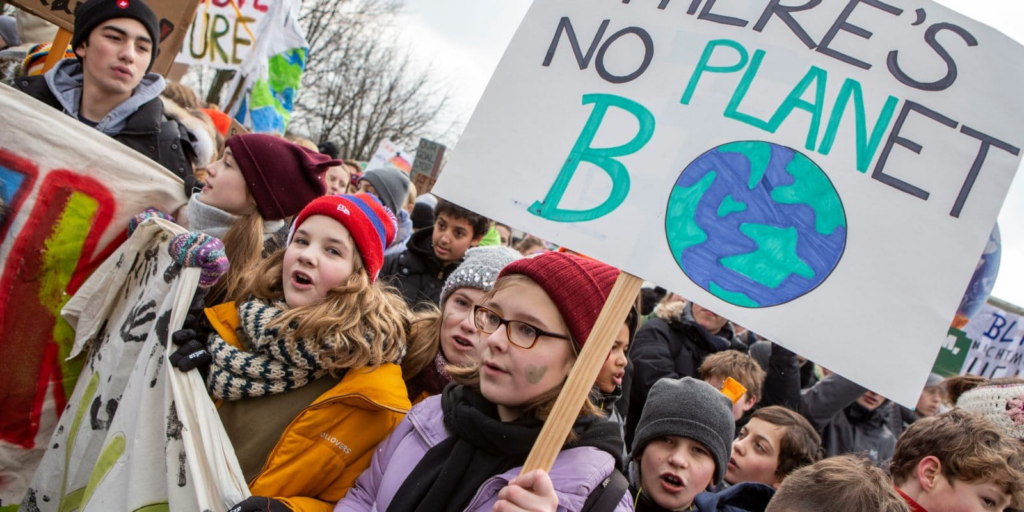
Appendix
Reggio school is build by …(Why reggio scl)
Milagro is an ex-Green Peace Activist and high school teacher at Reggio school. She advocates for community organization and direct action.
Margherita is an environmental activist who advocates for the subtle Ahuman approach.
Caretaker is looks after Reggio School’s garden and approaches activism through holistic care for the earth.
Greta Thunberg is a young, anti-conformist environmental activist and student at Reggio School. She advocates for disruptive action to save the planet.
Politician is anti-activism. He attempts to pacify the crowd with empty words.
Bibliography
THE AHUMAN MANIFESTO – Activism for the end of the Anthropocene by PATRICIA MACCORMACK
The Care Manifesto by Andreas Chatzidakis, Jamie Hakim, Jo Littler, Catherine Rottenberg, and Lynne Segal
https://reggio.es/el-edificio/
References
Figure 1 : José Hevia. Reggio School .2022
https://reggio.es/el-edificio/
Figure 2 : José Hevia. Reggio School .2022
https://reggio.es/el-edificio/
Figure 3 : Edward Burtynsky, Coal Mine #1, North Rhine, Westphalia, Germany, 2015, photo © Edward Burtynsky, courtesy of Nicholas Metivier Gallery, Toronto
Figure 4 : Geplaatst op: 25-02-2024 Auteur: Peter Horsten & Simon de Wijs Breda University of Applied Sciences Publicatie: UNCOVER07
https://www.nritmedia.nl/kennisbank/47384/the-inevitable-evolution-from-a-circular-to-a-regenerative-society/?topicsid=
Figure 5 : Jaime Raposo. 2021.
Figure 6 : Featured photo: Earth Day ,YC 1970
Figure 7 : Pedestrians cross the street as climate activists block its traffic lanes in Berlin, Germany October 31, 2022. REUTERS/Michele Tantussi
Figure 8 : No Voice Too Small: Fourteen Young Americans Making History by Lindsay H. Metcalf (Editor), Keila V. Dawson (Editor), Jeanette Bradley (Editor), Jeanette Bradley (Illustrator) Charlesbridge, September 2020, ages 5-9.
Figure 9 : The Guardian article, 23 Sep,2019
https://www.theguardian.com/environment/2019/sep/23/greta-thunberg-trump-stare-video-moment-un-summit
Figure 10 : Instagram Post of Greta Thunberg
Figure 11 : Young people participating in a climate strike in Berlin, Germany in 2019. Photo credit: Tim Lüddemann / CC BY-NC-ND 2.0
Footnotes
- Patricia Maccormack , The Ahuman Manifesto, Introduction ,Pg.21 ↩︎
- Patricia Maccormack , The Ahuman Manifesto, Chapter 1,Pg.10 ↩︎
- Patricia Maccormack , The Ahuman Manifesto, Chapter 2,Pg.62 ↩︎
- Patricia Maccormack , The Ahuman Manifesto, Introduction ,Pg.28 ↩︎
- Greenpeace Mission Statement ↩︎
- Patricia Maccormack , The Ahuman Manifesto, Chapter 3 ,Pg.47 ↩︎
- Greenpeace Energy Solutions ↩︎
- Patricia Maccormack , The Ahuman Manifesto, Chapter 4 ,Pg.65 ↩︎
- Andreas Chatzidakis, Jamie Hakim, Jo Littler, Catherine Rottenberg, and Lynne Segal , The Care Manifesto, Chapter 1 ,Pg.1 ↩︎
- Andreas Chatzidakis, Jamie Hakim, Jo Littler, Catherine Rottenberg, and Lynne Segal , The Care Manifesto, Chapter 3 ,Pg.20 ↩︎
- https://officeforpoliticalinnovation.com/work/colegio-reggio-explora/ ↩︎
- Patricia Maccormack , The Ahuman Manifesto, Chapter 5 ,Pg.88 ↩︎
- Andreas Chatzidakis, Jamie Hakim, Jo Littler, Catherine Rottenberg, and Lynne Segal , The Care Manifesto, Chapter 4 ,Pg.42 ↩︎
- Greenpeace Action Plan ↩︎
- Patricia Maccormack , The Ahuman Manifesto, Chapter 6 ,Pg.105 ↩︎
- Andreas Chatzidakis, Jamie Hakim, Jo Littler, Catherine Rottenberg, and Lynne Segal , The Care Manifesto, Chapter 2 ,Pg.10 ↩︎
- World Economic Forum, Davos, 24 January 2019 ↩︎
- In a speech rally in Berlin that took place between March 21-29 in 2019. ↩︎
- US Congress, Washington DC, 17 September 2019 ↩︎
- Extinction Rebellio London, UK, April 2019 ↩︎
- https://medium.com/wedonthavetime/greta-thunberg-speech-to-un-secretary-general-ant%C3%B3nio-guterres-362175826548 ↩︎
- TEDXSTOCKHOLM on November 24, 2018. ↩︎
- UN Climate Action Summit Septmber 23, 2019 ↩︎
- Greta Thunberg on her X platform on May 23, 2021 ↩︎
- Patricia Maccormack , The Ahuman Manifesto, Chapter 1 ,Pg.54 ↩︎
- Patricia Maccormack , The Ahuman Manifesto, Chapter 1 ,Pg.53 ↩︎
- Donald Trump, US president ↩︎
- UN Climate Action Summit, September 23, 2019 at UN headquarters in NYC ↩︎
- The statement in a 2017 interview of Pat Buchanan, a former U.S. presidential candidate and political commentator. ↩︎
- Danny Healy-Rae says he ‘does not subscribe to climate change’ and ‘whatever we do on this Earth will not change the weather’ – Irish Mirror Online ↩︎
- Patricia Maccormack , The Ahuman Manifesto, Chapter 1 ,Pg.62 ↩︎
- Patricia Maccormack , The Ahuman Manifesto, Chapter 1 ,Pg.61-62 ↩︎
- Patricia Maccormack , The Ahuman Manifesto, Chapter 1 ,Pg.67 ↩︎

